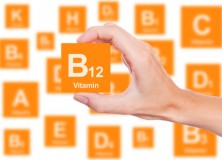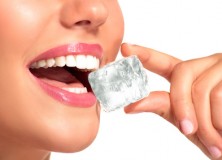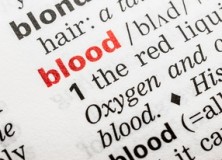Wait right there! Thinking of skipping past this article because you don’t exactly consider yourself an athlete? Well, when it comes to iron deficiency in athletes, you don’t need to be a professional athlete or out running regular marathons, recreational athletes should know about the possible risks too.
Category: Featured Articles
These posts will appear in the feature carousel.
How to Get the Most Out of Your Iron Supplement
If your doctor has advised you to take iron, then you’re going to want to take it so that your body gets the most out of the supplement with the least amount of side effects. Here are some tips to help you do just that!
What is Happening to My Nails?
Your nails say a lot about your health and doctors have actually looked to patients’ nails for clues about their health for centuries. It may seem like a strange connection, but changes in the visual appearance of your nails can be a sign of iron deficiency. The reason for this is that iron helps to carry oxygen throughout the body, including to your tissues. When you’re iron deficient, your tissues and muscles get less oxygen and this can show in your nails.
How Much Iron is Actually Absorbed?
People often ask me how much iron they actually absorb from the food they eat. Well, the truth is that there is no clear cut answer because every body is different. I can, however, provide some helpful information and benchmarks based on the Dietary References Intakes.
Adding ‘Superfoods’ to Your Diet in 2015
Happy to see that you’re out of your turkey coma and ready to get back on track with some healthy choices for the New Year!
You’re not alone in wanting to eat better – most of us crave a healthier diet after a December of making merry with sweets and other holiday goodies. Even those who have made the effort to eat iron-rich foods over the holidays have probably managed to over-indulge in even these foods. ‘Tis the way of the season, it seems! You can have too much of a good thing though, and eating loads of red meat and other iron-rich foods, depending on how you prepare them, fat content, etc., can actually be a not-so-healthy choice.
Vegetarian or Vegan Doesn’t Have to Mean Iron Deficiency…
Are you a vegetarian, vegan, or flexitarian? What’s a flexitarian, you ask? According to the Merriam-Webster Collegiate Dictionary that officially listed the word in 2012, a flexitarian is “one whose normally meatless diet occasionally includes meat or fish”, in other words, a semi-vegetarian!
With an estimated 4% of Canadians living a vegetarian lifestyle, as many as 40% of North Americans living a flexitarian lifestyle, and an unknown (but growing) number of people following vegan diets, iron deficiency in these groups is worth a mention – allow me to explain why…
Iron 101: Heme Iron vs Non-Heme Iron
We talk a lot about heme iron and non-heme iron and I know that it can get a little confusing at times. With all the iron supplements and iron-rich foods out there, it can be hard to keep track of what’s what and why some are better than others. So, let’s break it down and quickly compare heme iron vs non-heme iron.
Last Minute Stocking-Stuffer Ideas
Well, it’s that time of year again… the holiday season is upon us! While this is one of my favourite times of the year, there are always a few people on my list that prove difficult to find the ideal gift for.
A Quick & Easy Guide to Choosing the Right Iron Supplement
So, you’re in need of an oral iron supplement and head to the pharmacy where you’re greeted by an overwhelming selection. How do you pick the right one without resorting to an impromptu game of eeny, meeny, miny, moe? Keeping in mind that every body is different (and a one-size-fits-all iron supplement does not exist), I recommend that the “right” iron supplement is one that patients can tolerate with the least amount of side effects.
12 Days of Iron-Rich Foods: A Twist on an Old Classic
You know what I love about this time of year? Everything! The cheery music, so many treats, and enjoying laughs with loved ones over delicious meals are all things that make this time of year special.
Are You Always Cold?
Baby, it’s cold outside, but if you find yourself feeling cold even when it’s anything but, then this could be a sign of iron deficiency.
Vitamin B12 Plays a Role in Iron Deficiency
Surprised to see a post about vitamin B12 on an iron deficiency blog? Don’t be! Vitamin B12 actually has quite a lot to do with your blood and iron levels and I’m going to explain just what the relationship is in plain English without all the medical jargon and mumbo jumbo you might find in health articles.
Unusual Cravings to Consume Ice, Dirt or Clay Could Point to Iron Deficiency Anemia
We all remember that one kid growing up who would gross out the class by eating something that was never meant to be eaten, like dirt or sand at recess. You probably chalked it up to the kid being “weird” or “gross” and likely figured they were just doing it for attention, right? Well, what if I told you that eating these types of non-food materials could actually be a sign of iron deficiency or related anemia? Continue reading
Are You a Blood Donor? You May Need to Replenish Your Iron!
Each year, Canadian Blood Services (CBS) collects about 950,000 units of blood from approximately 600,000 donors. That’s a lot of blood, and a lot of lives that can be saved because of it! Did you know that a single donation can save up to 3 lives?
While donating blood is an extremely generous act to help others who are in need, it is also important to take care of yourself in the process. Continue reading
So, I’m Feeling Fine… Should I Stop Taking My Iron Supplement?
You know how the doctor always stresses that you should finish a round of antibiotics even if you feel better, yet you still sometimes stop the second your symptoms are gone? That’s pretty much how it goes for iron supplements too. People tend to take them as advised because they feel run down, but as soon as they start to feel like themselves again, they might push their iron supplement to the back of the medicine cabinet. Continue reading
How Many Children Are Iron Deficient?
According to the Centers for Disease Control and Prevention (CDC), iron deficiency is the most common nutritional deficiency in the world as well as the leading cause of anemia. Unfortunately, children are among the most affected and the prevalence of ID and IDA in children is high. The following statistics will give you a better understanding of just how big a problem iron deficiency is among children in Canada and the world.
Things You Should Avoid When Consuming Iron
You probably want to ensure that you get the most out of the iron you consume, whether from iron-rich foods or an iron supplement. Knowing what foods and substances can interfere with your body’s absorption of iron is one way to help you do that, which is exactly what I will outline here.
Iron Deficiency Can Affect Your Child’s Cognitive Function
You might already know that iron plays an essential role in your child’s health, but did you know that not getting enough of it has the potential to cause life-long issues? Iron helps oxygen move from the lungs to the rest of the body. Thus, iron deficiency can have a lasting impact on your child’s life.
13 “Bloody” Facts
Happy Friday! In light of Patient Blood Management Awareness Week last week, I thought I’d share some interesting and enlightening facts about blood that you probably didn’t know!
Pre-Op Blood Management Can Aid in a Better Recovery
Last week was Blood Management Awareness Week (November 3 – 7) and, as part of a provincial patient blood management program, I think it’s only fitting to talk about blood management and iron deficiency, specifically how it relates to surgery.



















